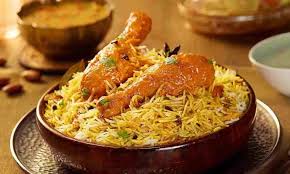Origins

Biryani, the aromatic and flavorful rice dish, has captured the hearts and taste buds of millions around the world. This beloved dish is known for its distinct flavors, rich textures, and enticing aroma that wafts through the air, making mouths water. But have you ever wondered about the origins of biryani? Where did this delectable dish come from and how did it evolve into the culinary masterpiece that it is today? Let’s delve into the rich history of biryani and uncover its intriguing origins.
The history of biryani can be traced back to ancient Persia, modern-day Iran, where a similar dish called “beryan” was popular. Beryan was a one-pot dish made with rice, meat, and an array of aromatic spices. It was believed to have been brought to the Indian subcontinent by Persian traders and merchants during the Mughal era in the 16th century. The Mughals, who were known for their lavish lifestyle and grand feasts, embraced this flavorful dish and incorporated it into their royal cuisine.
The history of biryani can be traced back to ancient Persia, modern-day Iran, where a similar dish called “beryan” was popular. Beryan was a one-pot dish made with rice, meat, and an array of aromatic spices. It was believed to have been brought to the Indian subcontinent by Persian traders and merchants during the Mughal era in the 16th century. The Mughals, who were known for their lavish lifestyle and grand feasts, embraced this flavorful dish and incorporated it into their royal cuisine.
The word “biryani” is derived from the Persian word “birian,” which means “fried before cooking.” This refers to the unique cooking technique used in biryani, where the rice and meat are partially cooked separately and then layered together with spices, saffron, and sometimes, fried onions, before being cooked together in a sealed pot, known as “dum” cooking. This slow-cooking method allows the flavors to meld together and creates the characteristic taste and aroma of biryani.
As biryani gained popularity in the Indian subcontinent, it started to evolve into different regional variations, each with its own unique flavors and cooking techniques. For example, in the northern region of India, the Awadhi biryani, also known as Lucknowi biryani, became famous for its rich and aromatic flavors, with the use of tender meat, fragrant spices, and saffron-infused rice. In the southern region of India, the Hyderabadi biryani, also known as Kacchi Biryani, gained fame for its spicier profile, with the use of tangy tamarind and fiery red chilies.
Apart from the Mughals, other rulers and dynasties in the Indian subcontinent also contributed to the evolution of biryani. For example, the Nizams of Hyderabad, known for their opulent lifestyle and patronage of the arts, played a significant role in popularizing the Hyderabadi biryani. The Mappila community of Kerala, a state in southern India, has their unique style of biryani called Malabar biryani, which is influenced by Arab and Persian culinary traditions due to their historical trade links with the Middle East.
Biryani has also been influenced by local ingredients and regional culinary practices, leading to the creation of unique biryani variations in different parts of the Indian subcontinent. For example, the Kolkata biryani, also known as Calcutta biryani, is known for its subtle flavors and the use of potatoes, which is believed to have been influenced by the British colonial era when meat was scarce, and potatoes were used as a filler. The Sindhi biryani, popular in the Sindhi community of Pakistan and India, is known for its spicy and tangy flavors, with the use of yogurt and an array of aromatic spices.
In recent years, biryani has become a global culinary phenomenon, with different countries and cultures putting their unique spin on this iconic dish. From the aromatic and fragrant biryanis of the Middle East to the spicy
